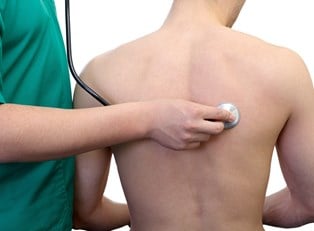Chronic obstructive pulmonary disorder (frequently abbreviated as COPD) is a serious and painful condition that reduces a patient’s ability to breathe properly.
While deadly, this disease is typically slow-acting. Most people diagnosed with COPD are 60 or older. However, the earlier treatment begins, the better chance that a patient will be able to continue to live a fulfilling, healthy life.
Here is a look at some of the most common treatments for this condition—including the aims of treatment, changes patients can make, and medications used to alleviate symptoms.
Goals of COPD Treatment
Currently, there is no complete cure for COPD. This means that treatment focuses primarily on managing symptoms and delaying the decline of lung function. Despite this grim prognosis, many people with COPD have a high quality of life thanks to the treatments that are now available—it’s all a matter of finding things that work for a specific individual.
Lifestyle Changes
The absolute most important lifestyle change that a person with COPD can make is to stop smoking immediately. Smoking plays a key factor in almost every instance of the disease, and continuing the habit will only reduce lung function more than it already is. Quitting won’t reverse the damage already done to the lungs, but it will prevent more damage from being inflicted, and it can sometimes drastically improve a patient’s prognosis.
Additionally, exercising can also be beneficial for COPD. While it may seem counterintuitive that an activity that leaves you short of breath can be good when you have problems breathing already, exercise can actually strengthen and improve lung function. However, due to the serious nature of the condition, exercise routines are typically developed with the aid of COPD specialists.
Bronchiodilators
Bronchiodilators are a type of medicine that work to open constricted airways. Most commonly, these drugs are administered through inhalers, so that patients can receive immediate relief if they have a flare-up. The type of inhaler used will vary from person to person, but doctors frequently prescribe metered-dose inhalers, dry powder inhalers, or nebulizers.
As the name implies, metered-dose inhalers work by delivering a specific amount of medication in the form an aerosolized mist. This type of inhaler is small and lightweight, making a good choice for treatment on-the-go. However, this device uses a propellant to expel the medication from the inhaler, and it’s commonly created from ethanol, which is a corn byproduct. For people with corn allergies, metered-dose inhalers may not be a viable option.
Dry powder inhalers deliver bronchiodilators in powdery form. Like the metered-dose inhaler, it’s easily portable, but it contains no additional propellant. This makes it a good choice for those with propellant allergies. However, this type of inhaler requires that users be able to take a quick and deep breath, and this is not always possible for patients whose COPD has progressed significantly.
Unlike other inhaler varieties, nebulizers are generally not as portable and are therefore typically only used at home. They work by converting liquid medicine into a mist that is then inhaled into the lungs. They make a good choice for COPD patients who have difficulties operating a more traditional inhaler or for those who need to inhale large amounts of medication.
Antibiotics
COPD patients are more prone to bacterial infections in the lungs that can lead to severe conditions like pneumonia or bronchitis. If this occurs, doctors will frequently use antibiotics as a means to treat these conditions and reduce their symptoms. Unlike bronchiodilators, antibiotics are only taken as long as they are necessary.



